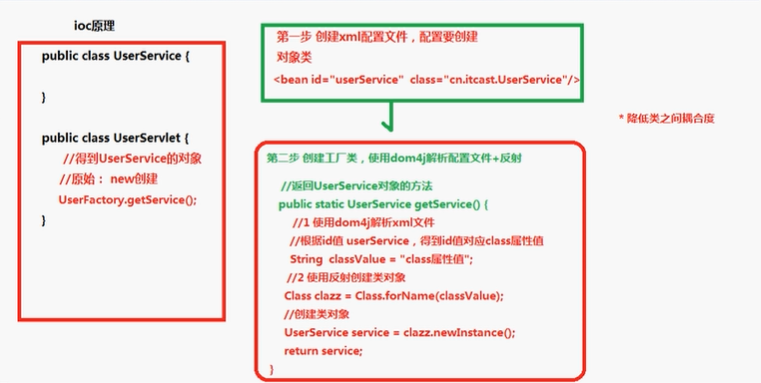tensorflow制作tfrecord格式数据
- 2019 年 11 月 8 日
- 筆記
tf.Example msg
tensorflow提供了一种统一的格式.tfrecord来存储图像数据.用的是自家的google protobuf.就是把图像数据序列化成自定义格式的二进制数据.
To read data efficiently it can be helpful to serialize your data and store it in a set of files (100-200MB each) that can each be read linearly. This is especially true if the data is being streamed over a network. This can also be useful for caching any data-preprocessing.
The TFRecord format is a simple format for storing a sequence of binary records.
protobuf消息的格式如下:
https://github.com/tensorflow/tensorflow/blob/r2.0/tensorflow/core/example/feature.proto
message BytesList { repeated bytes value = 1; } message FloatList { repeated float value = 1 [packed = true]; } message Int64List { repeated int64 value = 1 [packed = true]; } // Containers for non-sequential data. message Feature { // Each feature can be exactly one kind. oneof kind { BytesList bytes_list = 1; FloatList float_list = 2; Int64List int64_list = 3; } }; message Features { map<string, Feature> feature = 1; }; message FeatureList { repeated Feature feature = 1; }; message FeatureLists { map<string, FeatureList> feature_list = 1; };tf.Example是一个map. map的格式为{"string": tf.train.Feature}
tf.train.Feature基本的格式有3种:
- tf.train.BytesList
- string
- byte
- tf.train.FloatList
- float(float32)
- double(float64)
- tf.train.Int64List
- bool
- enum
- int32
- unit32
- int64
- uint64
将自己的数据制作为tfrecord格式
完整代码
from __future__ import absolute_import, division, print_function, unicode_literals import tensorflow as tf import numpy as np import IPython.display as display import os import cv2 as cv import argparse def _bytes_feature(value): """Returns a bytes_list from a string / byte.""" if isinstance(value, type(tf.constant(0))): value = value.numpy() # BytesList won't unpack a string from an EagerTensor. return tf.train.Feature(bytes_list=tf.train.BytesList(value=[value])) def _float_feature(value): """Returns a float_list from a float / double.""" return tf.train.Feature(float_list=tf.train.FloatList(value=[value])) def _int64_feature(value): """Returns an int64_list from a bool / enum / int / uint.""" return tf.train.Feature(int64_list=tf.train.Int64List(value=[value])) def convert_to_tfexample(img,label): """convert one img matrix into tf.Example""" img_raw = img.tostring() example = tf.train.Example(features=tf.train.Features(feature={ 'label': _int64_feature(label), 'img': _bytes_feature(img_raw)})) return example #path="/home/sc/disk/data/lishui/1" def read_dataset(path): imgs=[] labels=[] for root, dirs, files in os.walk(path): for one_file in files: #print(os.path.join(path,one_file)) one_file = os.path.join(path,one_file) if one_file.endswith("png"): label_file = one_file.replace('png','txt') if not os.path.isfile(label_file): continue f = open(label_file) class_index = int(f.readline().split(' ')[0]) labels.append(class_index) img = cv.imread(one_file) imgs.append(img) return imgs,labels def arg_parse(): parser = argparse.ArgumentParser() #parser.add_argument('--help',help='ex:python create_tfrecord.py -d /home/sc/disk/data/lishui/1 -o train.tfrecord') parser.add_argument('-d','--dir',type=str,default='./data',required='True',help='dir store images/label file') parser.add_argument('-o','--output',type=str,default='./outdata.tfrecord',required='True',help='output tfrecord file name') args = parser.parse_args() return args def main(): args = arg_parse() writer = tf.io.TFRecordWriter(args.output) #path="/home/sc/disk/data/lishui/1" imgs,labels = read_dataset(args.dir) examples = map(convert_to_tfexample,imgs,labels) for example in examples: writer.write(example.SerializeToString()) writer.close() print("write done") if __name__ == '__main__': """ usage:python create_tfrecord.py [data_path] [outrecordfile_path] ex:python create_tfrecord.py -d /home/sc/disk/data/lishui/1 -o train.tfrecord """ main() 首先就是需要有工具函数把byte/string/float/int..等等类型的数据转换为tf.train.Feature
def _bytes_feature(value): """Returns a bytes_list from a string / byte.""" if isinstance(value, type(tf.constant(0))): value = value.numpy() # BytesList won't unpack a string from an EagerTensor. return tf.train.Feature(bytes_list=tf.train.BytesList(value=[value])) def _float_feature(value): """Returns a float_list from a float / double.""" return tf.train.Feature(float_list=tf.train.FloatList(value=[value])) def _int64_feature(value): """Returns an int64_list from a bool / enum / int / uint.""" return tf.train.Feature(int64_list=tf.train.Int64List(value=[value]))接下来,对于图片矩阵和标签数据,我们调用上述工具函数,将单幅图片及其标签信息转换为tf.ttrain.Example消息.
def convert_to_tfexample(img,label): """convert one img matrix into tf.Example""" img_raw = img.tostring() example = tf.train.Example(features=tf.train.Features(feature={ 'label': _int64_feature(label), 'img': _bytes_feature(img_raw)})) return example对于我的数据,图片以及label文件位于同一目录.比如dir下有图片a.png及相应的标签信息a.txt.
def read_dataset(path): imgs=[] labels=[] for root, dirs, files in os.walk(path): for one_file in files: #print(os.path.join(path,one_file)) one_file = os.path.join(path,one_file) if one_file.endswith("png"): label_file = one_file.replace('png','txt') if not os.path.isfile(label_file): continue f = open(label_file) class_index = int(f.readline().split(' ')[0]) labels.append(class_index) img = cv.imread(one_file) imgs.append(img) return imgs,labels遍历data目录,完成图片读取,及label读取. 如果你的数据不是这么存放的,就修改这个函数好了,返回值仍然是imgs,labels
最后就是调用 tf.io.TFRecordWriter将每一个tf.train.Example消息写入文件保存.
def main(): args = arg_parse() writer = tf.io.TFRecordWriter(args.output) #path="/home/sc/disk/data/lishui/1" imgs,labels = read_dataset(args.dir) examples = map(convert_to_tfexample,imgs,labels) for example in examples: writer.write(example.SerializeToString()) writer.close() print("write done")

